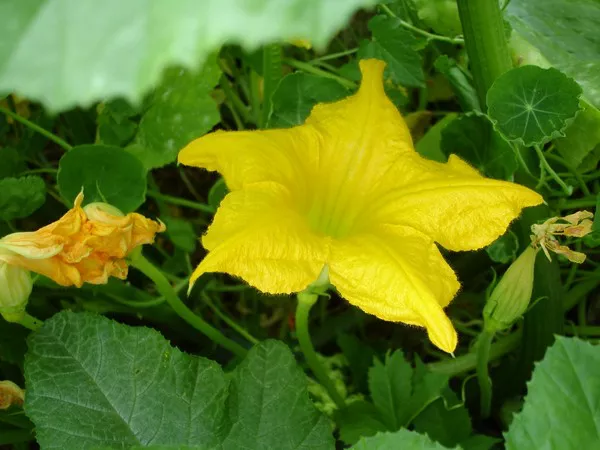Flowers have long been celebrated for their beauty and fragrance, but did you know that many of them are also edible? From vibrant petals to delicate blooms, edible flowers can add a unique touch to a wide range of dishes, from salads and desserts to cocktails and savory entrees. In this article, we’ll explore 15 different types of edible flowers, highlighting their flavors, culinary uses, and tips for incorporating them into your cooking.
15 Different Types of Edible Flowers
1. Rose (Rosa spp.)
With their romantic aroma and delicate petals, roses are perhaps the most iconic edible flowers. Rose petals have a subtle floral flavor with hints of sweetness, making them a versatile ingredient in both sweet and savory dishes. They can be used to infuse syrups, flavor jams and jellies, or simply garnish salads and desserts.
2. Lavender (Lavandula spp.)
Known for its calming aroma and vibrant purple flowers, lavender adds a unique floral flavor to dishes. Lavender flowers have a slightly sweet and herbaceous taste, reminiscent of rosemary and mint. They can be used to flavor baked goods, teas, and cocktails, or infused into syrups and vinegars for a fragrant twist.
3. Nasturtium (Tropaeolum majus)
Nasturtium flowers come in a range of colors, from bright orange and yellow to deep red and burgundy. These cheerful blooms have a peppery flavor similar to watercress, making them a popular addition to salads and savory dishes. Nasturtium petals can also be used to garnish hors d’oeuvres or add a pop of color to cheese boards.
4. Calendula (Calendula officinalis)
Also known as pot marigold, calendula flowers have a mild, slightly tangy flavor reminiscent of saffron. Their vibrant orange and yellow petals can be used to add color and flavor to soups, stews, and rice dishes. Calendula flowers are also prized for their medicinal properties and can be infused into teas or tinctures for their soothing effects.
5. Viola (Viola spp.)
Viola flowers, also known as Johnny-jump-ups or pansies, come in a rainbow of colors and have a mild, slightly sweet flavor. Their delicate petals make them a popular choice for decorating cakes and desserts, while their subtle flavor pairs well with salads and fruit dishes. Viola flowers can also be candied or frozen into ice cubes for an elegant touch.
6. Chive (Allium schoenoprasum)
Chive flowers, the blooms of the common herb chive, have a mild onion flavor similar to the plant’s leaves. These delicate purple flowers can be sprinkled over salads, omelets, and baked potatoes for a burst of color and flavor. Chive flowers are also edible raw or lightly sautéed and can be used to garnish soups and vegetable dishes.
7. Dandelion (Taraxacum officinale)
Often considered a pesky weed, dandelions are actually a nutritious and versatile edible flower. Dandelion flowers have a slightly bitter flavor with hints of honey, making them a unique addition to salads and stir-fries. The petals can also be used to make dandelion wine or infused into vinegar for a tangy condiment.
8. Elderflower (Sambucus nigra)
Elderflowers, the creamy white blooms of the elderberry tree, have a delicate floral flavor with hints of citrus and vanilla. These fragrant flowers are commonly used to make elderflower cordial, a sweet syrup that can be added to cocktails, desserts, and sparkling water. Elderflowers can also be dipped in batter and fried to make crispy fritters.
9. Hibiscus (Hibiscus rosa-sinensis)
Hibiscus flowers are known for their vibrant colors and tart, cranberry-like flavor. The petals can be dried and used to make hibiscus tea, a refreshing beverage enjoyed hot or cold. Hibiscus flowers can also be used to infuse syrups, jams, and desserts with their distinctive flavor and deep red color.
10. Squash Blossom (Cucurbita spp.)
The bright yellow blossoms of squash plants are not only beautiful but also deliciously edible. Squash blossoms have a delicate, slightly sweet flavor with hints of squash. They can be stuffed with cheese or herbs and fried to make crispy appetizers, or added to soups, salads, and pasta dishes for a touch of color and flavor.
11. Borage (Borago officinalis)
Borage flowers, with their vibrant blue petals and cucumber-like flavor, are a striking addition to salads and cocktails. The flowers can also be candied or frozen into ice cubes for a decorative touch. Borage flowers are rich in nutrients and have been used for centuries in traditional medicine for their calming and anti-inflammatory properties.
12. Bee Balm (Monarda spp.)
Also known as wild bergamot or Oswego tea, bee balm flowers have a citrusy flavor with hints of mint and thyme. These fragrant blooms can be used to make herbal tea or infused into syrups, vinegars, and cocktails. Bee balm flowers also attract bees and butterflies to the garden, making them a valuable addition to any pollinator-friendly landscape.
13. Jasmine (Jasminum spp.)
Jasmine flowers are prized for their sweet, intoxicating fragrance and delicate flavor. The blossoms can be used to flavor teas, rice dishes, and desserts, or infused into syrups and liqueurs for a floral twist. Jasmine flowers are often associated with romance and celebration and are a popular choice for wedding cakes and special occasion desserts.
14. Marigold (Tagetes spp.)
Marigold flowers, with their vibrant orange and yellow petals, have a slightly spicy flavor reminiscent of saffron and citrus. The flowers can be used to add color and flavor to salads, soups, and rice dishes, or infused into vinegars and oils for a fragrant condiment. Marigolds are also prized for their pest-repellent properties and are often planted in vegetable gardens to deter insects.
15. Lavender (Lavandula spp.)
Last but not least, lavender flowers are not only beautiful but also deliciously fragrant and flavorful. With their distinctive floral aroma and slightly sweet taste, lavender flowers can be used to flavor baked goods, teas, and desserts, or infused into syrups and honey for a floral twist. Lavender flowers also have calming properties and are often used in aromatherapy and herbal remedies for their soothing effects.
How to Use Edible Flowers in Cooking
When using edible flowers in cooking, it’s important to select flowers that are safe to eat and free from pesticides or other chemicals. Here are some tips for incorporating edible flowers into your culinary creations:
Choose fresh, organic flowers: Select flowers that are freshly picked and free from pesticides or other chemicals. If purchasing flowers from a grocery store or farmer’s market, look for organic or edible varieties.
Wash flowers thoroughly: Before using edible flowers, wash them thoroughly to remove any dirt, insects, or residues. Gently rinse the flowers under cool running water and pat them dry with a clean kitchen towel or paper towel.
Use flowers sparingly: While edible flowers can add a beautiful and unique touch to dishes, they should be used sparingly to avoid overwhelming the flavors of other ingredients. Start with a small amount of flowers and gradually increase the quantity as desired.
Consider flavor compatibility: When incorporating edible flowers into recipes, consider their flavor profiles and how they will complement other ingredients. For example, floral varieties like roses and lavender pair well with sweet dishes, while peppery flowers like nasturtiums are better suited for savory dishes.
Experiment with different preparations: Edible flowers can be used in a variety of ways, including raw, cooked, or preserved. Experiment with different preparations to discover new flavor combinations and culinary possibilities. Try adding edible flowers to salads, desserts, cocktails, or even savory dishes like omelets and stir-fries.
Store flowers properly: To extend the shelf life of edible flowers, store them in the refrigerator in a sealed container lined with a damp paper towel. Some flowers can also be stored in water, similar to fresh herbs, to keep them hydrated and fresh.
Be cautious with allergens: While most edible flowers are safe for consumption, some individuals may be allergic to certain types of flowers. If you or your guests have known allergies, exercise caution and avoid using flowers that may trigger allergic reactions.
Final Thoughts:
Edible flowers are not only beautiful but also versatile and flavorful ingredients that can enhance a wide range of dishes. From salads and desserts to cocktails and savory entrees, there are countless ways to incorporate edible flowers into your cooking. Experiment with different flower varieties, flavors, and preparations to discover new and exciting culinary possibilities. Whether you’re hosting a dinner party, baking a special occasion cake, or simply enjoying a refreshing summer salad, edible flowers are sure to add a touch of elegance and whimsy to your culinary creations. So go ahead, embrace your inner chef, and let your creativity blossom with edible flowers!
You Might Be Interested In:










![10 Most Richest Cities in the United States [Revealed!]](https://www.validdownloads.com/wp-content/uploads/2023/12/Manjula-Pothos.webp)















